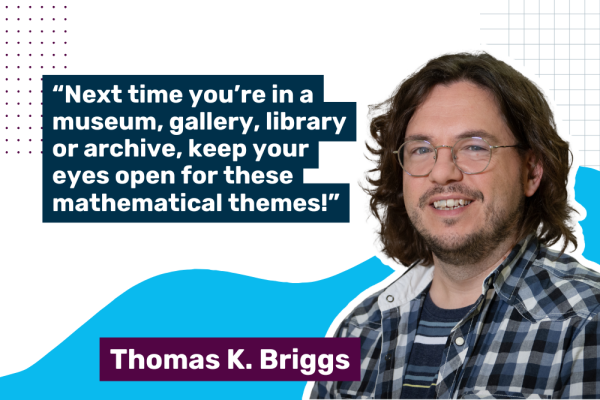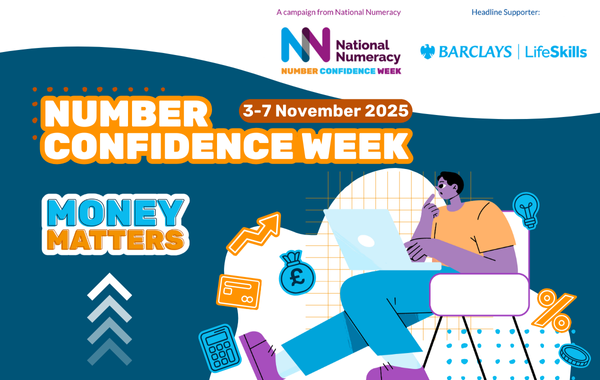Mathematics has been part of human history for at least 4,000 years (arguably ten times as long, if the Lebombo bone has anything to say about it), but this core part of humanity's development is often missing-in-action when it comes to the UK's museums and galleries. Here are a handful of mathematical morsels that can often be found hiding amongst art and history collections.
1. When a particular shape turns up in the natural world, in art, or in industry, there's usually a reason
That reason is usually related to the mathematical properties of the shapes involved: hexagons form in beehives because circles don't tessellate, and triangles are sturdy shapes to build with because their angles can't change unless the lengths of their sides change too.
2. "Game theory" is a real branch of mathematics
It explores how people make decisions when outcomes from those decisions affect other people. Game theorists have discovered strategies for winning (or minimising loss) when playing many games from noughts and crosses to Risk but, perhaps surprisingly, many real-world situations such as political campaigns, salary negotiations, and even deciding whether to change queues in a busy supermarket can benefit from game theory's findings. If you've ever played rock, paper, scissors to solve a dispute, you've dipped a toe into this area of mathematics.
3. Every map is a lie
It's not merely difficult to make an accurate map of a spherical planet on a flat piece of paper; it's actually impossible. Different methods for making flat maps of Earth's surface are all unavoidably wrong, but in different ways. This mathematical fact has shaped our view of the world, historically, politically, and socially, and it's one of the oldest drivers of mathematical development: the word 'geometry' comes from a combination of ancient Greek words for Earth ('geo') and measurement ('metron').
4. Artistic concepts like symmetry, tessellation, proportion, and perspective are also mathematical ideas
The Italian renaissance of the 14th & 15th centuries introduced, among other things, a solid theory of point perspective to the artists' toolbox. Author Leon Battista Alberti combined developments in art, optics, and geometry in his book De Pictura, describing a system that allowed artists to create realistic projections of the 3-dimensional world on 2-dimensional canvases. It marked a revolution in art and mathematics that built upon centuries of development in both. This and other geometric concepts are not sometimes art and sometimes maths: they're always both.
5. There are a lot of famous historical figures who were mathematicians as well as the thing they're famous for
Florence Nightingale was pivotal in revolutionising the use of information to make decisions, including experimenting with new ways of visualising data: she contributed to improving sanitary conditions in the British Army ('at home and abroad'), which led to better health for the general public too. Her work was of such importance that she became the first ever female member of the Royal Statistical Society.
Sir Christopher Wren, famously the architect of St Paul's Cathedral, was also a mathematician who made developments in the mathematics of optics; solved a problem that arose from Kepler's groundbreaking discovery that the planets moved in elliptical orbits; and whose mathematical achievements are acknowledged by Sir Isaac Newton in his phenomenally important Principia.
Ada Lovelace is known for writing arguably the world's first computer program (without a computer to run it on), but it's less well-known that this program was intended to compute the Bernoulli numbers, which have a variety of uses and applications across mathematics and physics.
When not making up fantastical tales, Lewis Carroll made contributions to various mathematical fields, including lending his name to a sorting diagram commonly encountered by schoolchildren in maths lessons today.
Napoleon Bonaparte has a theorem about equilateral triangles named after him (though whether he discovered it himself is disputed); Art Garfunkel completed an MA in Mathematics Education; British comedian Romesh Ranganathan used to be a maths teacher; and the actual pope, Leo XIV, is also a maths graduate.
Next time you're in a museum, gallery, library or archive, keep your eyes open for these mathematical themes!
Maybe you'll spot other themes that haven't been mentioned here: there are plenty! Consider sharing your findings with others, e.g. on social media: don't forget to mention National Numeracy if you do. Let the site you visited know about it too: museums care about feedback, so let them know what mathematical tidbits you encountered, and that you'd like to see more opportunities to explore their mathematical connections.









